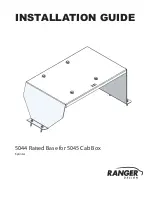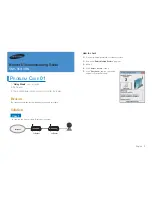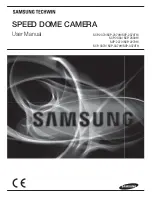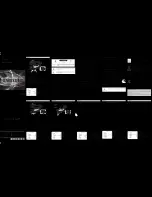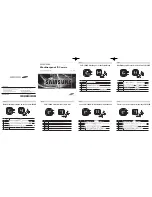
TRAKKER Antares 2420 and 2425 Hand-Held Terminal User’s Manual
Co de 39
Nugget
4-22
If the terminal is on a different IP subnetwork than the DCS 300 or host, then you must
set the subnet mask and default router.
Using the Icons to Monitor RF Communications
Once you have configured the devices in the RF network, you can begin using the
application on the T2425 to collect and transmit data via RF communications. If the
T2425 is communicating with your host computer, the terminal will connect and begin
running the application that shipped on the terminal.
As you use the T2425 to collect data, icons are displayed to help you monitor RF and
network communications on the terminal. Use the two icons shown in the illustration to
monitor communications between the T2425 and other devices in the RF network.
Sign on
User..............
Password..........
Program/procedure.
Menu..............
Current Library...
TNAPP F
*
•
242XU.093
You See These Icons
Status of Communications
What You Need to Do
The Radio icon remains
on.
No communications.
The T2425 is not connected to an
access point. The Network Activate
command is disabled, or there is a
problem with the radio card and it is
turned off.
You need to enable the Network Activate
command. For help, see “Network
Activate” in Chapter 9.
No icons appear.
No communications.
The T2425 is not connected to an
access point.
Make sure the access points are turned on
and operating. You may also be using the
terminal out of the RF range of an access
point. Try moving closer to an access point
to re-establish communications.
If the access point is on and you are in
range, you may need to configure the
terminal to communicate in the network.
For help, see “Configuring the T2425”
earlier in this chapter.
Summary of Contents for Trakker Antares 2420
Page 1: ...TRAKKERAntares 2420and2425 Hand HeldTerminal P N 064024 006 User s Manual...
Page 15: ...nuggetf code39 Contents xv Glossary Index G I...
Page 16: ...xvi...
Page 24: ...xxiv...
Page 25: ...nuggetf code39 Getting Started 1...
Page 26: ...1 2...
Page 60: ...1 36...
Page 61: ...Learning How to Use the Terminal 2...
Page 62: ...2 2...
Page 103: ...Co de 39 Nugget Configuring the Terminal 3...
Page 104: ...Co de 39 Nugget 3 2...
Page 134: ...3 32...
Page 135: ...Operating the Terminal in a Network 4...
Page 136: ...4 2...
Page 173: ...Using Custom Applications 5...
Page 174: ...5 2...
Page 193: ...Troubleshooting 6...
Page 194: ...6 2...
Page 219: ...Running Diagnostics 7...
Page 220: ...7 2...
Page 243: ...Reader Command Reference 8...
Page 244: ...8 2...
Page 268: ...8 26...
Page 269: ...Configuration Command Reference 9...
Page 270: ...9 2...
Page 389: ...Terminal Specifications A...
Page 390: ...A 2...
Page 404: ...A 16...
Page 405: ...Full ASCII Charts B...
Page 406: ...B 2...
Page 415: ...International Character Support C...
Page 416: ...C 2...
Page 427: ...Using the Default Applications D...
Page 428: ...D 2...
Page 438: ...D 12...
Page 439: ...Glossary G...
Page 440: ...G 2...
Page 463: ...Index I...
Page 464: ...I 2...
Page 480: ...I 18...


































